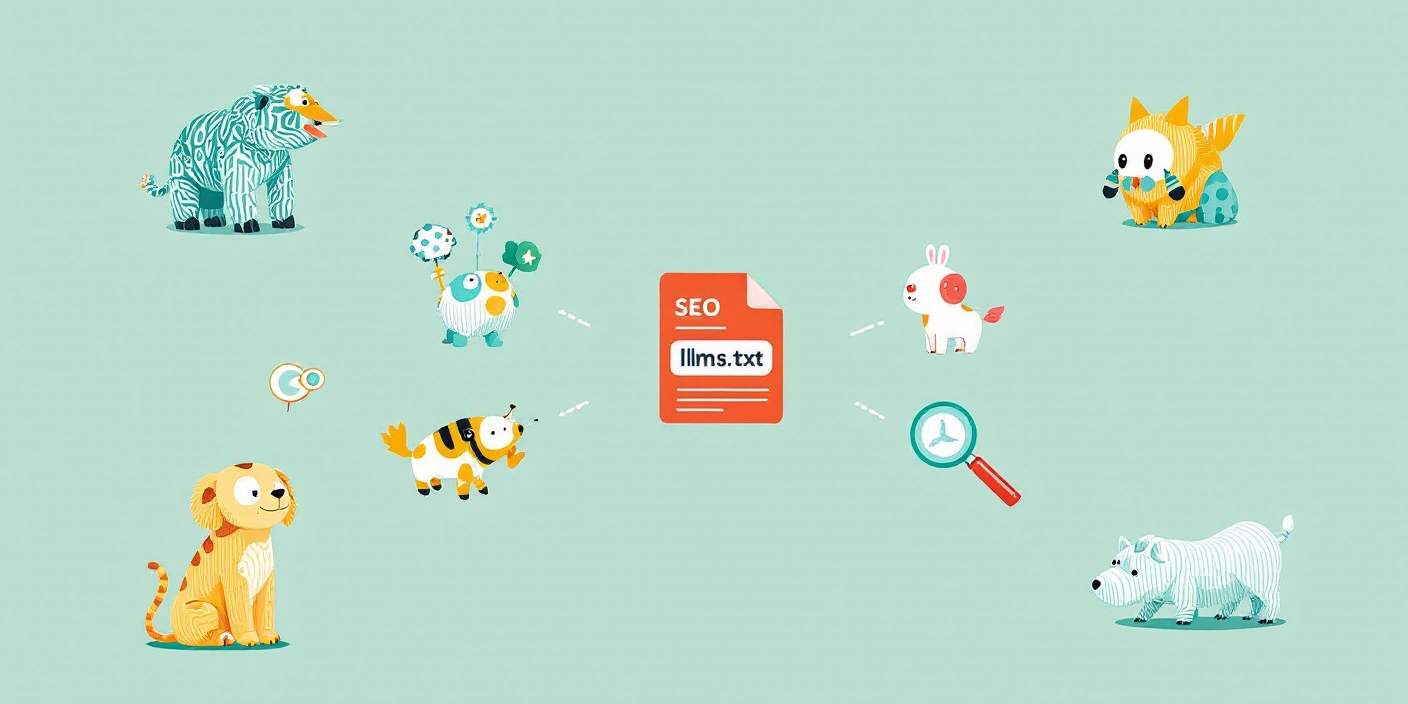AI Ranking Signals - How Search Really Works Now (2026 Edition)

Disclaimer:
This guide is based on independent research, real-world campaign data from Appear Online, and publicly available information about AI search models. No proprietary systems from Google, OpenAI, Anthropic, or Perplexity have been accessed.
Introduction
Search is no longer a simple match between keywords and webpages. In 2026, AI-driven search systems - like Google’s AI Overviews, OpenAI Search, Perplexity, and Bing’s LLM integrations - rely on probability, trust, and entity understanding, not classic ranking factors.
This means traditional SEO signals (title tags, backlinks, keywords) still matter - but only as inputs to a much bigger system that tries to:
- Understand your brand
- Evaluate your credibility
- Cross-reference your claims
- Reduce hallucination risk
- Cite you as a trusted source
- Deliver answers, not links
If your brand isn’t structured for this new system, you don’t get visibility - whether organic or AI-generated.
This article breaks down what AI ranking signals actually are, how search really works now, and how brands can optimise for the new era.
What Are AI SEO Signals?
AI SEO signals are the trust, authority, clarity, and entity indicators that large language models use to determine:
- Whether your content is correct
- Whether you’re a reputable source
- Whether you should appear in AI Overviews
- Whether your claims can be cited
- Whether your entity “fits” a topic
- Whether you reduce hallucination risk
These signals are not identical to traditional ranking factors.
AI focuses heavily on:
- Entity strength
- Reputation
- Citation probability
- Publisher trust
- Narrative consistency across the web
- Structured clarity
- Low ambiguity
- Link quality, not just quantity
- External validation
In short: AI doesn’t rank pages - it ranks confidence. Your job is to build signals that increase the model’s confidence in your brand.
Need trustworthy backlinks that boost AI confidence? Get your link-building plan.
How AI Evaluates Websites vs Google’s Old Ranking System
Before we go deeper, here’s a clean comparison of how SEO “used to work” vs how AI-driven search evaluates information today.
Old SEO was page-based. AI SEO is entity-based.
Below is the fixed, readable table in your Appear Online orange:
Old SEO vs AI SEO - Comparison Table
The SEO landscape has shifted from a rules-based system to a probability-based one. Traditional ranking relied on crawling, indexing, and evaluating individual pages. AI-driven search now focuses on entities, reputation, and the likelihood that a source is accurate and trustworthy.
This comparison table highlights how the core mechanics of search have changed - and why optimising for AI requires a completely different approach than classic SEO tactics.
The key takeaway:
SEO has shifted from ranking pages to ranking truthfulness, usefulness, and authority.
AI systems cite the sources they trust most - not simply the ones with the most backlinks or keywords.
Core AI Ranking Signals in 2026
AI systems don’t “rank webpages.” They evaluate confidence, factual consistency, reputation, and entity clarity.
These are the core signals models rely on today.
1. Entity Strength (The #1 AI Ranking Signal)
Entities are now the foundation of AI search. An entity can be:
- A brand
- A person
- A product
- A service
- A topic
- A geographic location
AI models check whether your brand has:
- A clearly defined identity
- Strong online footprint
- Consistent descriptions across the web
- Supporting citations
- Relevance to the topic
If your entity is weak, AI simply won’t cite you - even if your content is strong.
2. Brand & Author Reputation Signals
AI heavily accounts for reputation because it impacts hallucination risk.
Reputation is built from:
- Editorial coverage in trusted publications
- Author profiles with history
- Mentions by reputable sources
- High-signal citations
- Consistent positive sentiment
This is why digital PR directly influences AI visibility.
Strengthen your authority with digital PR that earns real editorial coverage - book a consultation with Appear Online.
3. Citation Probability (AI’s “Would I Quote This?” Test)
LLMs prefer sources that:
- Align with consensus
- Reduce factual risk
- Have clear, unambiguous statements
- Provide evidence
- Are recognised by journalists and domain experts
Citation probability = your likelihood of appearing in an AI Overview.
This is a major reason publications like The Guardian, BBC, Mayo Clinic and GOV.UK are consistently cited above others.
4. Editorial Coverage & Digital PR Signals
AI models use editorial signals to understand:
- Who you are
- What topics you are associated with
- Whether you’re credible
- Whether journalists trust you
This includes:
- Features
- Quotes
- Mentions
- Industry commentary
- Interviews
- Reports cited by journalists
Digital PR is now a core AI ranking factor.
5. Topical Depth & Semantic Coverage
AI prioritises sources that demonstrate full topical mastery.
Examples:
- Covering every subtopic in a niche
- Semantic consistency
- Answer completeness
- Clear definitions
- Strong interconnected content clusters
A 5,000-word article is not enough. AI looks for topic authority across the entire domain.
6. Schema & Structured Data Density
LLMs prefer structured information they can interpret quickly.
Important schema types:
- Organization
- Person
- Article
- FAQ
- Product
- LocalBusiness
- Medical (if relevant)
- Breadcrumb
- WebSite
- HowTo
- Speakable (voice)
Schema does not guarantee AI inclusion - but without it, your clarity is reduced.
7. E-E-A-T Across the Entire Open Web
E-E-A-T now extends far beyond your website.
AI checks:
- Editorial citations
- Awards
- Accreditations
- Founders' backgrounds
- Author profiles
- Third-party trust assets (Crunchbase, LinkedIn, industry sites)
- Charity or community involvement
- Historical performance
Appear Online example: Our “Highly Commended - Cardiff Business Awards 2024” is an extremely strong trust signal for AI.
8. Review Signals & Sentiment Data
AI models extract brand sentiment across:
- Google reviews
- Trustpilot
- X/Twitter
- Forums
- Industry directories
- News stories
High sentiment and consistent reviews increase your “trust probability.”
9. First-Party Data Quality
AI systems prefer:
- Clear statements
- Defined data
- Structured facts
- Explicit measurements
- Simple explanations
Content designed for AI readability performs better in AI-generated answers.
10. Technical Cleanliness & Crawlability
Models rely on search engine-crawled content.
Important:
- Fast load times
- Clear internal linking
- No heavy JS rendering
- Logical content hierarchy
- Clean sitemaps
- Strong URL structure
Technical SEO isn’t dead - just foundational.
11. External Profile Consistency (Critical for Entities)
AI cross-checks your identity everywhere:
- Crunchbase
- Companies House
- Local listings
- Wikipedia (if notable)
- Social media
- Review platforms
Inconsistent descriptions lower trust scores.
AI Overview-Specific Ranking Signals
AI Overviews behave differently from classic organic results.
Models prefer pages that:
✔ Provide direct, definitional answers
✔ Use clear, simple language
✔ Include supporting evidence
✔ Avoid ambiguity
✔ Start strong rather than bury answers
✔ Cover the full intent of the query
✔ Are low risk to cite
AI Overviews specifically reward:
- Clear step-by-step instructions
- Short semantic sections
- Defined scope
- Lists, tables, and bullets
- FAQs addressing edge cases
- Uncontroversial claims
- Statements backed by external sources
Ready to optimise for AI Overviews? Get your AI SEO audit today.
AI-Preferred Trust Signals (Table 2)
AI models rely on trust signals that go beyond traditional ranking factors. Instead of relying heavily on backlinks and keyword relevance, generative search systems look for patterns that indicate factual reliability, expert authority, and brand legitimacy. These trust signals reduce hallucination risk and increase citation probability - meaning brands with stronger trust profiles show up more often in AI-generated answers.
The table below summarises the trust indicators AI models rely on most in 2026.
How to Optimise for AI Ranking Signals (Step-by-Step)
Optimising for AI search isn’t about “hacking the algorithm.” It’s about building entity clarity, trust, and credibility signals across the entire web.
Here’s the exact process brands should follow:
Step 1 - Strengthen Your Entity Foundation
AI first needs to understand who you are.
Do this:
- Standardise your brand description across all platforms
- Create or update your Organization schema
- Add a complete Person schema for founders/authors
- Ensure your NAP data is consistent everywhere
- Build a clear About page with real details
The key takeaway: If your entity is unclear, AI won’t cite you.
Step 2 - Build Editorial Trust Through Digital PR
AI models lean heavily on journalistic validation.
Do this:
- Secure mentions in industry publications
- Publish founder commentary or expert quotes
- Run data-led PR campaigns
- Pitch to journalists weekly
- Target both niche + national outlets
Why it matters: Digital PR is now one of the strongest AI ranking signals.
Build real authority through digital PR - book a consultation with Appear Online.
Step 3 - Improve Topic Depth & Semantic Coverage
AI rewards sites with complete topical mastery.
Do this:
- Create full content clusters
- Answer every subtopic in your niche
- Cover FAQs, edge cases, definitions, processes
- Use semantic variations naturally
- Add tables, lists, and steps for AI interpretability
The key takeaway: Topical completeness = AI ranking power.
Step 4 - Strengthen Author Reputation
AI models evaluate authors just as much as brands.
Do this:
- Add full author bios
- Link to LinkedIn or external profiles
- Publish guest articles
- Earn citations from journalists
- Keep consistent author/person entity data
Result: Your brand becomes “safer” for AI to cite.
Step 5 - Implement High-Quality Schema Markup
Schema helps AI confirm facts quickly.
Do this:
- Add Organization schema
- Add Person schema
- Add Article + FAQ schema
- Add Product + Review schema (e-commerce)
- Ensure schema is error-free
Why it matters: Schema increases clarity, which increases citation probability.
Step 6 - Improve Sentiment & Review Signals
AI models monitor sentiment across the web.
Do this:
- Encourage real customer reviews
- Respond to negative feedback
- Maintain a consistent tone on social media
- Avoid polarising claims or language
The takeaway: Positive sentiment increases trust scores.
Step 7 - Strengthen Technical Health
Technical SEO remains foundational.
Essential checks:
- Fast site speed
- No heavy JavaScript
- Clean and crawlable content
- Logical internal linking
- Clear H1–H3 structure
Important: AI won’t cite content that search engines can’t reliably access.
AI SEO Checklist (2026)
Use this for internal QA before you publish anything.
Entity Signals
- Consistent brand description everywhere
- Strong About page
- Organization schema in place
- Authors have Person schema
Trust Signals
- Editorial coverage earned
- Mentions on high-authority sites
- Digital PR ongoing
- Brand sentiment is positive
Content Signals
- Clear definitions at the top
- Step-by-step sections
- Strong semantic coverage
- FAQs added for edge cases
- Tables and lists included
Technical Signals
- Fast loading
- No problematic JavaScript
- Crawlable content
- Clean semantic HTML structure
AI-Specific Signals
- Statements are clear and factual
- No ambiguity
- Evidence provided when possible
- Safe for models to cite (low hallucination risk)
Frequently Asked Questions (FAQs)
1. What are AI ranking signals?
AI ranking signals are the trust, entity, and credibility indicators that AI models use to decide whether to cite or recommend your content in AI-generated answers.
2. How are AI ranking signals different from traditional SEO ranking factors?
Traditional SEO ranked pages. AI ranks entities, trust, and factual clarity.
3. Do backlinks still matter in the AI era?
Yes - but AI values trustworthy, contextual, high-relevance links, not volume.
4. Does digital PR help with AI search?
Absolutely. Editorial coverage is one of the strongest AI trust signals.
5. Is keyword optimisation still relevant?
Yes, but semantic coverage, clarity, and topic depth matter far more.
6. How does AI decide which sources to cite?
AI cites brands that reduce hallucination risk, align with consensus, and demonstrate strong entity signals.
7. How long does it take to improve AI ranking signals?
Most brands see impact in 8–12 weeks, depending on PR velocity and content updates.
8. Does schema markup influence AI ranking?
Yes - not as a direct ranking factor, but as a clarity enhancer that models rely on.
9. How do we improve our chances of appearing in AI Overviews?
Provide clear answers, include structured elements, strengthen trust signals, and maintain entity authority.
10. How does sentiment affect AI rankings?
AI systems interpret sentiment across reviews, forums, and social media. Positive sentiment increases trust probability.
11. Why does AI care about author profiles?
LLMs evaluate human expertise because experts reduce the risk of factual errors.
12. Is AI SEO the same as traditional SEO?
No. Traditional SEO is ranking webpages. AI SEO is building trust signals across the web before content is ever cited.
.avif)


%20Agencies%20in%20the%20UK.webp)




